During the Rapid Inventory expedition, Pablo Venegas and Giuseppe Gagliardi tirelessly searched the forest for amphibians and reptiles. Of the 68 frog species registered, here are a few studio-like portraits.
Enjoy!

During the Rapid Inventory expedition, Pablo Venegas and Giuseppe Gagliardi tirelessly searched the forest for amphibians and reptiles. Of the 68 frog species registered, here are a few studio-like portraits.
Enjoy!

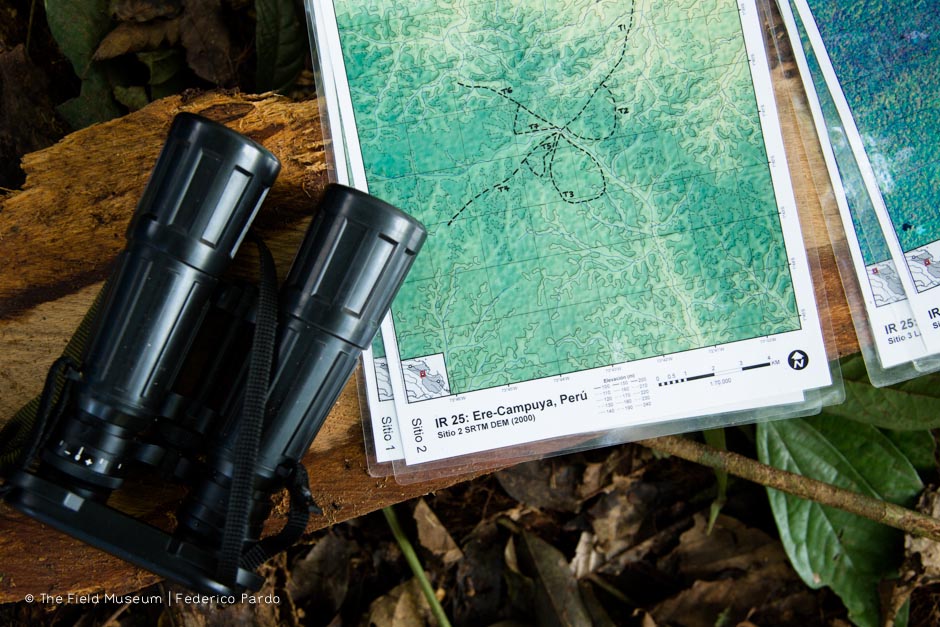
Our advance team creates more than 15 miles of trails through diverse habitats. Scientists can work faster and better because of these wonderful trails.
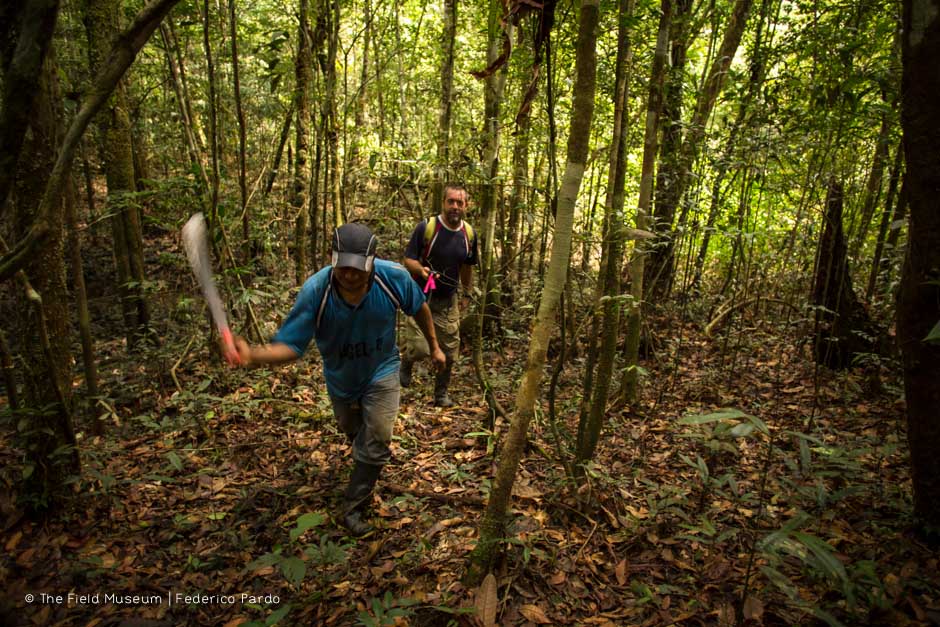
Rully, one of the local field assistants, and Alvaro, the inventory coordinator, cut a trail through a lowland forest.
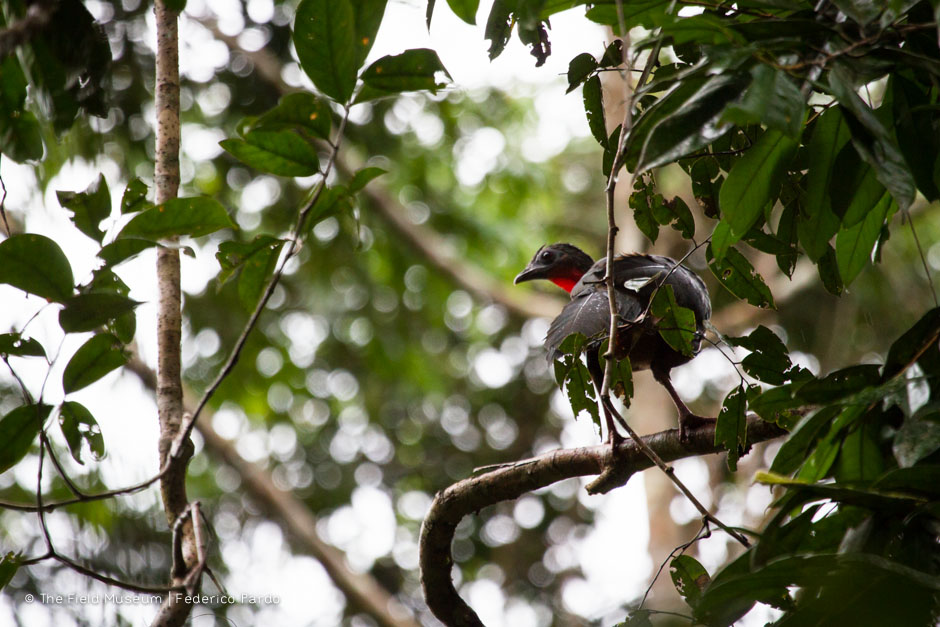
Spix’s Guan or pucacunga (Penelope jacquacu) is a common Amazonian bird and easy to spot as it flapped noisily overhead near our dining area at our second camp.
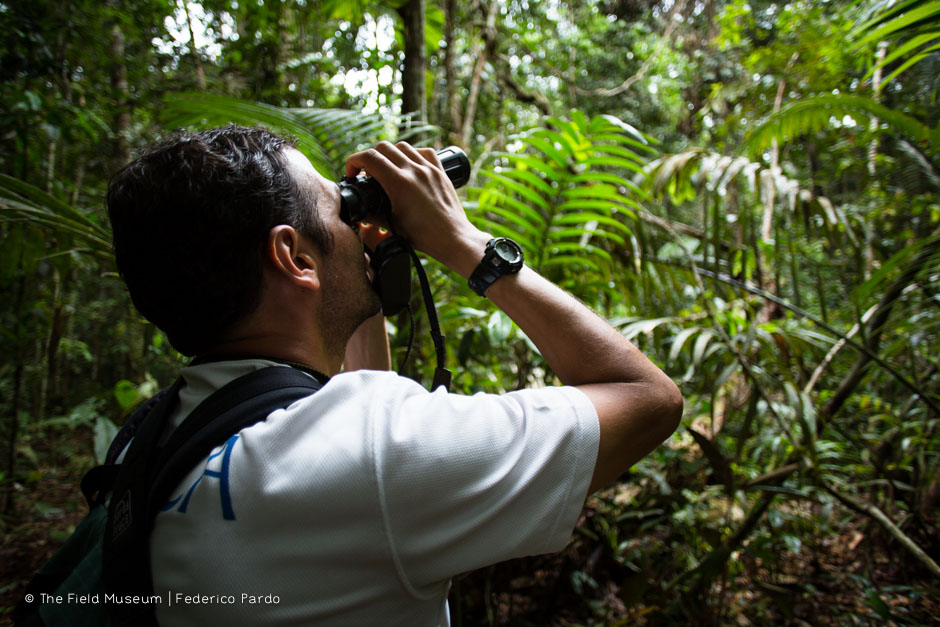
Every day, Ernesto and Doug start walking the trails before sunrise. In a typical day, they can record between 130-170 bird species.
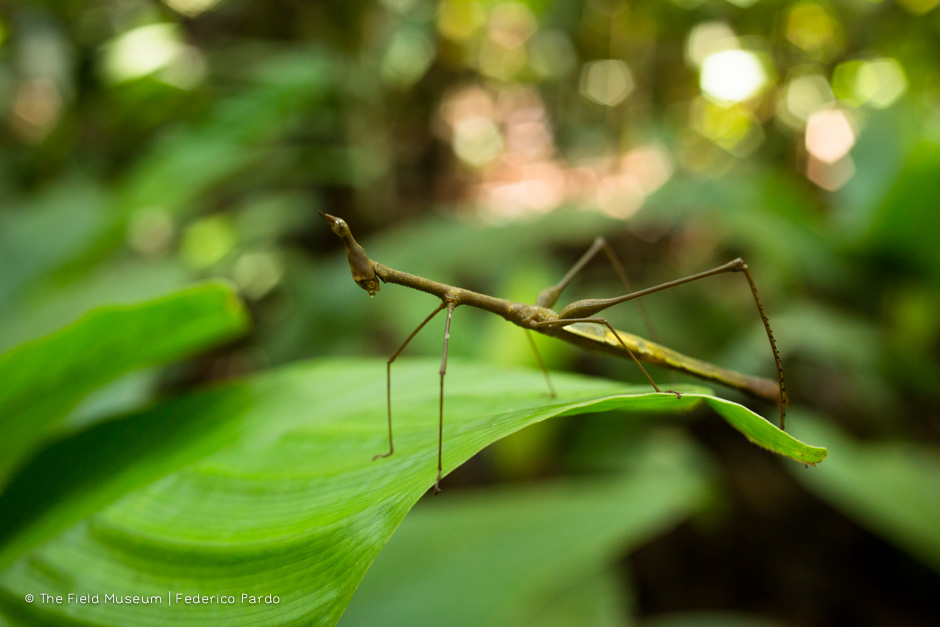
We did not officially survey insects during this rapid inventory. Insects are exceedingly diverse, and as a consequence, remain poorly known. For most insect groups it is difficult to draw conclusions about the conservation value of an area.
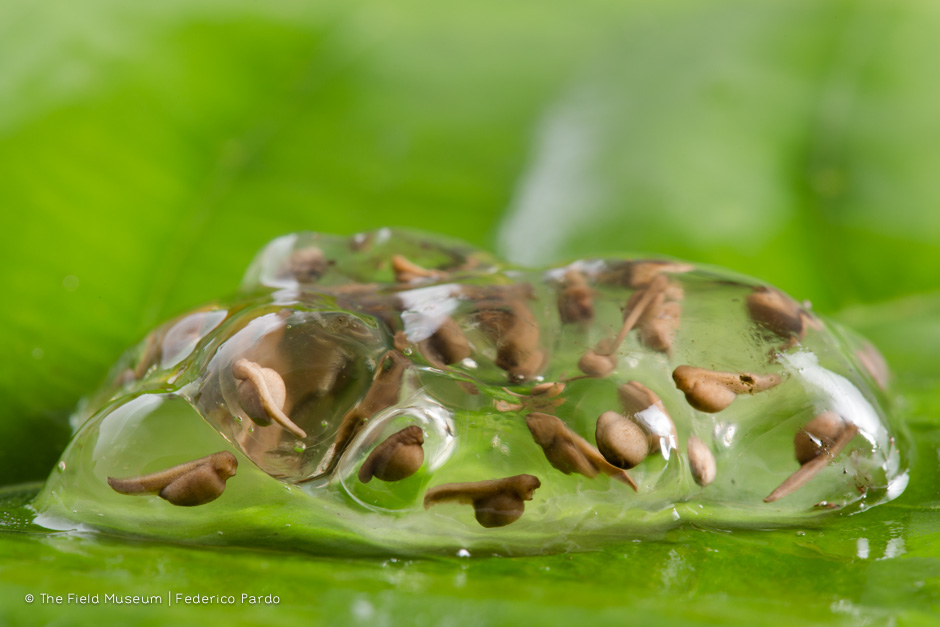
A clutch of tadpoles from Dendropsophus sarayacuensis. Our herpetologists found the frog right when it was about to lay the eggs.

We document the biological and cultural diversity of the region as a critical first step towards designing a solid conservation strategy.

Guiseppe Gagliardi and Alvaro del Campo photograph Liophis typhlus, one of the many snakes found on this inventory.
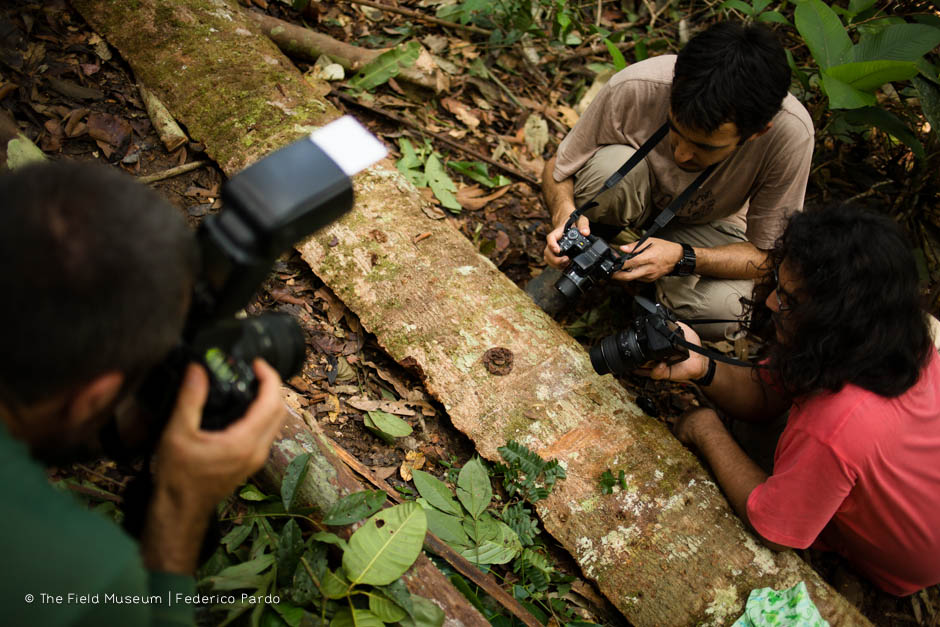
We document the biological and cultural diversity of the region as a critical first step towards designing a solid conservation strategy.
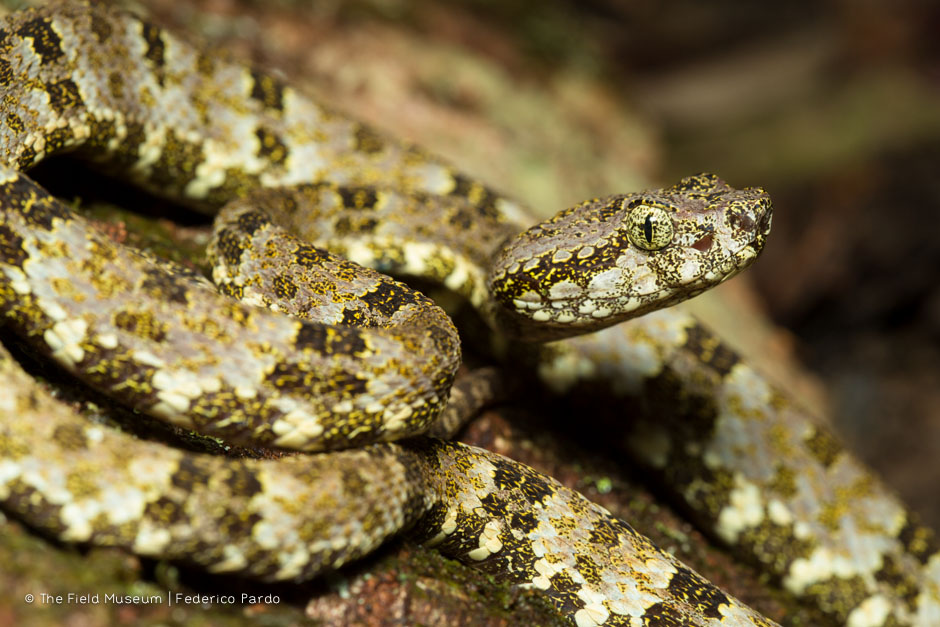
This poisonous snake (Bothriopsis bilineata) is rarely seen during an inventory because of its arboreal lifestyle. However, this individual was found near the ground.
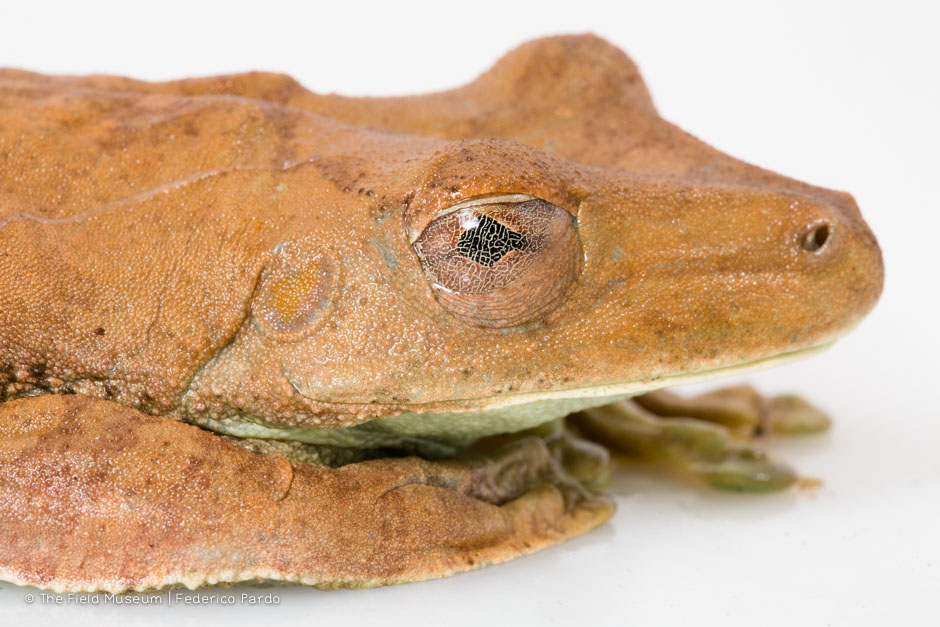
This frog (Hypsiboas boans) is quite common in the Amazon, and is one of the few species that has a reticulated pattern in the membrane of its eyelids.

”The Lab”: even though we are in the middle of the jungle, we create a space for scientists to work.

Bolivar and Norma are indigenous Cofan who live in Ecuador. They were our incredible cooks during our time in the field; this is their fourth inventory with the Field Museum!
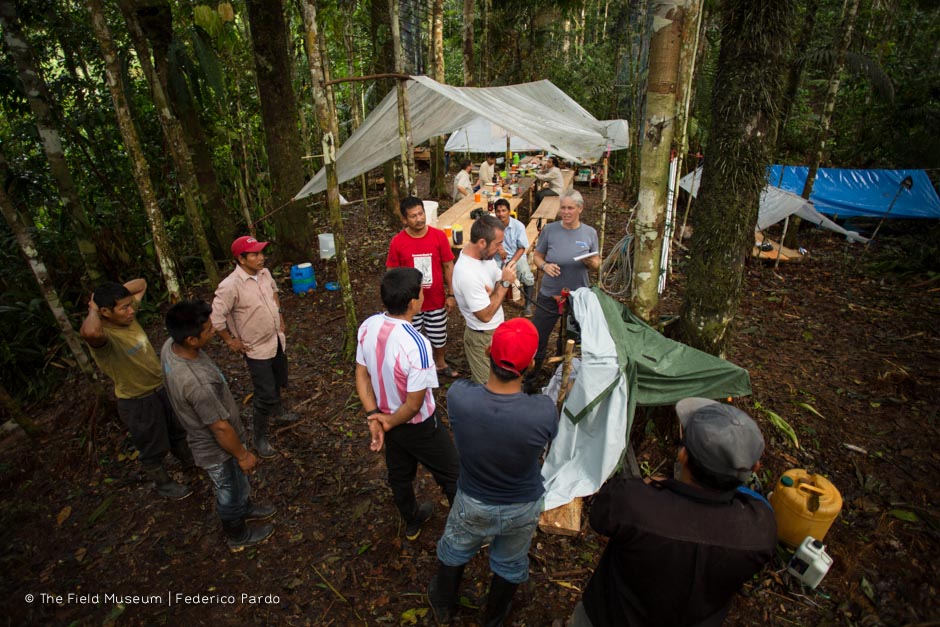
Radio communications were a struggle during the inventory: Hello? Hello? Tyana, are you there? Hello, Tyana? Tyana?
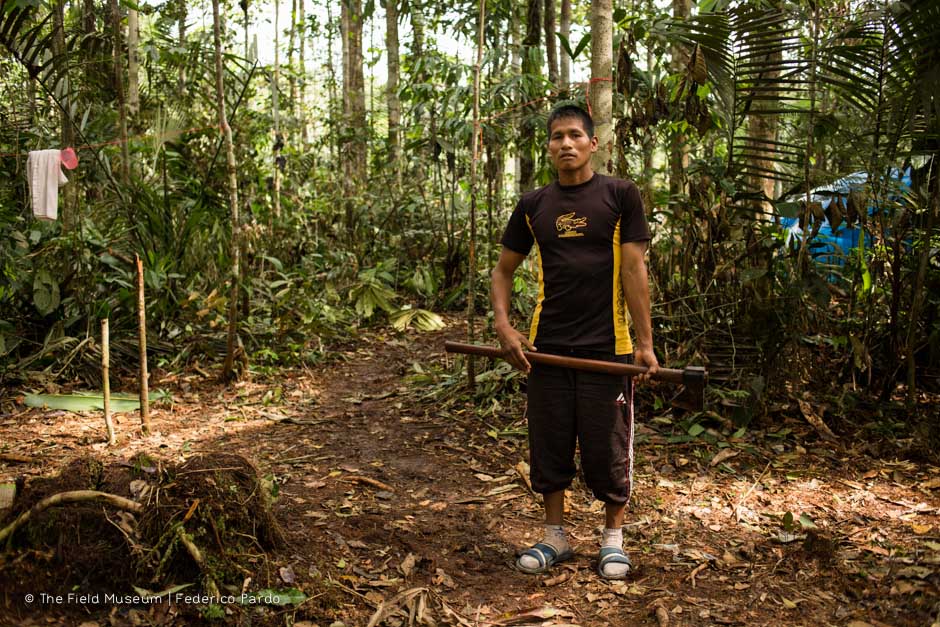
Local field assistants are known as “Los Tigres”. Their forest skills and knowledge play a critical role in the success of the inventories.
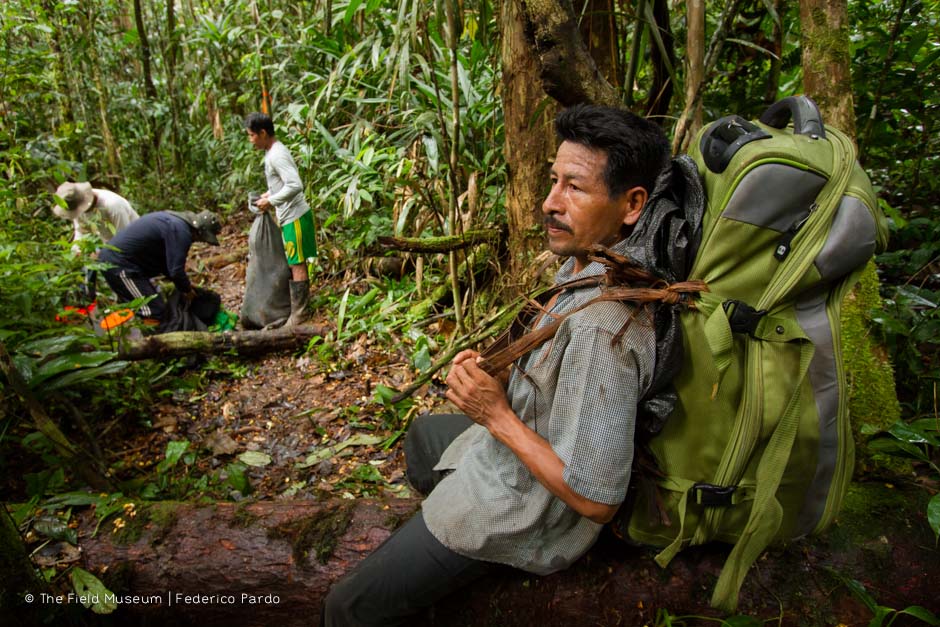
After building the heliport, campsite, and trail network as part of the advanced team, some of the local assistants stay on with the biological team to help scientists during the fieldwork.
Mastozoologists study mammals. Arguably, it could be said that this group of animals is the most charismatic since we all love seeing photos of dolphins, sloth bears, deers, river otters and even big cats like the jaguar. However, among the mammals we also find other animals that may not be your favorites: bats, peccaries and opossums. During the rapid inventory, Cristina Lopez (Perú) was our mammalogist surveying the forest and the rivers for medium and large mammals.
You need all of your senses to spot animals before they sense your presence and flee. You have to be alert to sounds in the canopy where a troop of monkeys may be jumping through the branches looking for ripe fruits and small edible insects. Through hearing and smell you may find a group of up to 200 white-lipped peccaries as they roam the forest looking for food. Tapirs, the largest land mammal in South America, live in these forests and seeing one wandering through the thick understory is pretty stunning. Even more so if it’s a mother followed by its striped baby. For many the grail in Amazonian forests is the jaguar. Cristina didn’t see one this time but we did find a peccary skull with a big hole near the eye socket that was likely created by a bite from the biggest cat in the Americas.
Understanding the conservation status of the mammal populations in these forests is vital. Not only are many of these species a critical food source for local communities but they also reveal the overall health of the ecosystem.
During ECCo’s 25th Rapid Inventory the team of botanists found 7 new plant species to science. This Qualea is one of them and collecting its flowers was a big challenge. Sit back and enjoy watching the botanists doing their work.
Our social team includes anthropologists, sociologists, biologists, an ethnobotanist, a forester and an indigenous leader. They spend time in the local villages of the region, talking with people to understand how they live and how they envision the future. Our team traveled by boat along the Putumayo River, spending 4 days in each community. During this time, Diana Alvira (Colombia), Galia Selaya (Bolivia), Mario Pariona (Peru), Maria Elvira Molano (Colombia), Margarita Medina (Peru), Ana Rosa Saenz (Peru) and Benjamín Rodríguez (Peru) joined the daily life of the community and conducted informal interviews with residents. They covered a range of topics: population structure and history of the community, current organizations within a community and their strengths; the historical and current ties with other communities; local economy and natural resource management; traditional use of plants for rituals, medicinal or artistic purposes; and other cultural traditions maintained by the community
Working at these communities is a full-immersion experience. The social team is always ready to join people at a minga and do communal work side-by-side with them; visit their gardens (chacras) and hunting sites (collpas, salt licks); and share in discussions with the leaders of the community, both men and women.
Understanding the realities of local villagers is integral to the social team’s work, and forms the backbone for creating a solid roadmap for the sustainable future of the region.
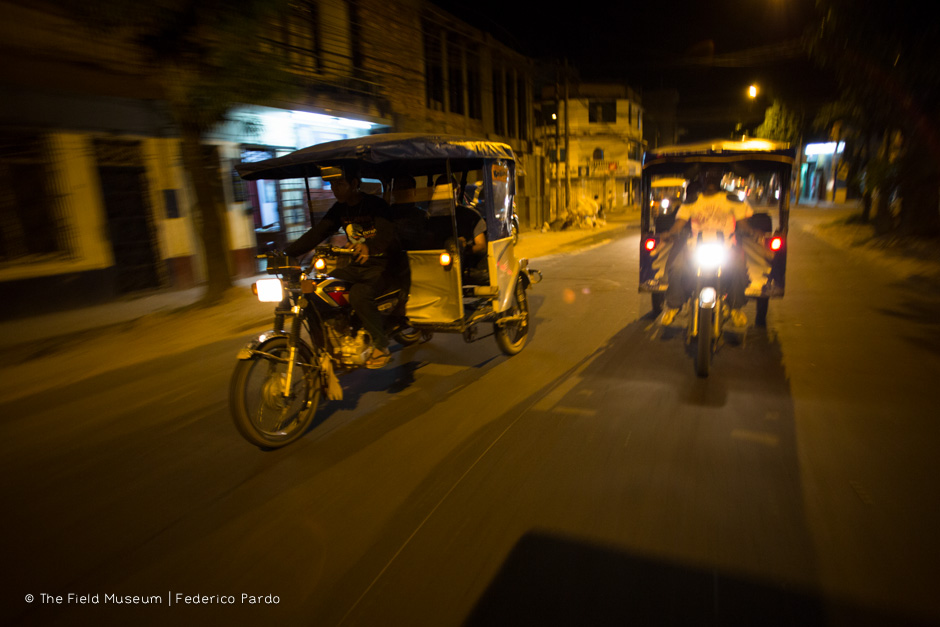
Iquitos is a vibrant city, a popular destination for international tourists and a commercial hub of rainforest products.
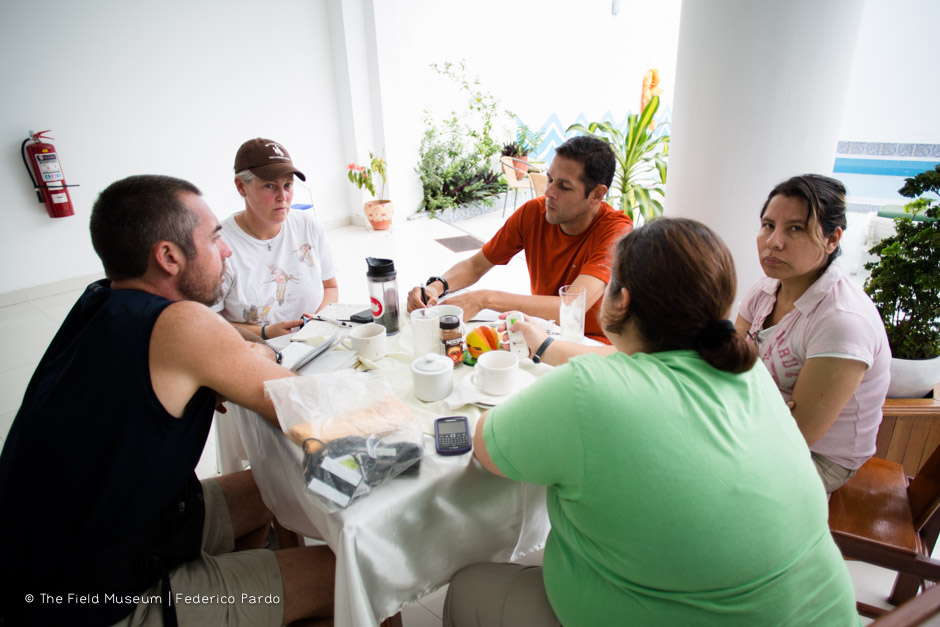
Rapid inventory logistics are quite complicated. Alvaro, Corine, Ernesto, Galia, and Tita discuss the final details to ensure the biological and the social teams arrive safely to their study sites.
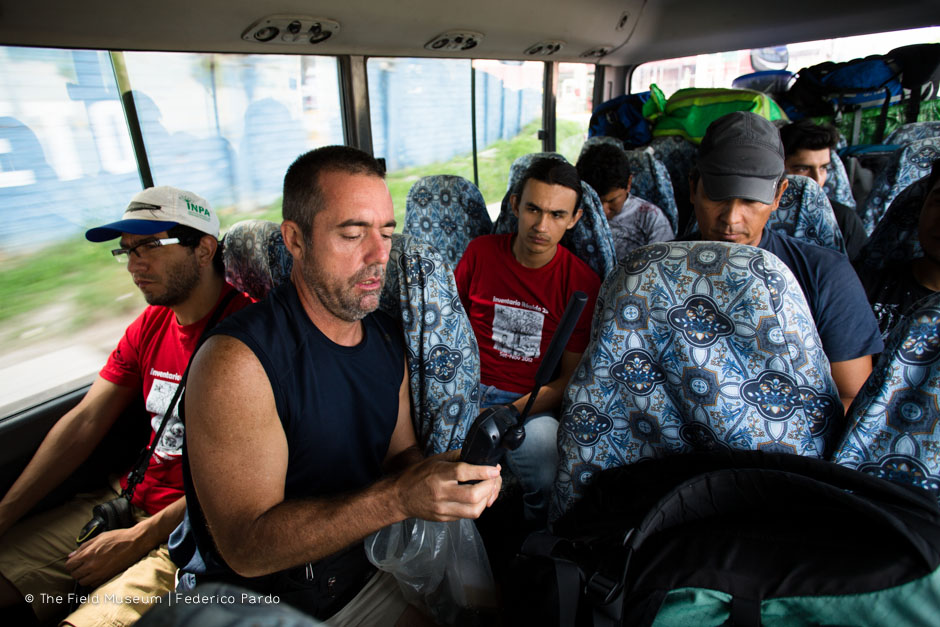
Alvaro del Campo and Italo Mesones review satellite phone and communications instructions. Alvaro coordinates the rapid inventories and Italo leads the advance team that will build the third campsite.
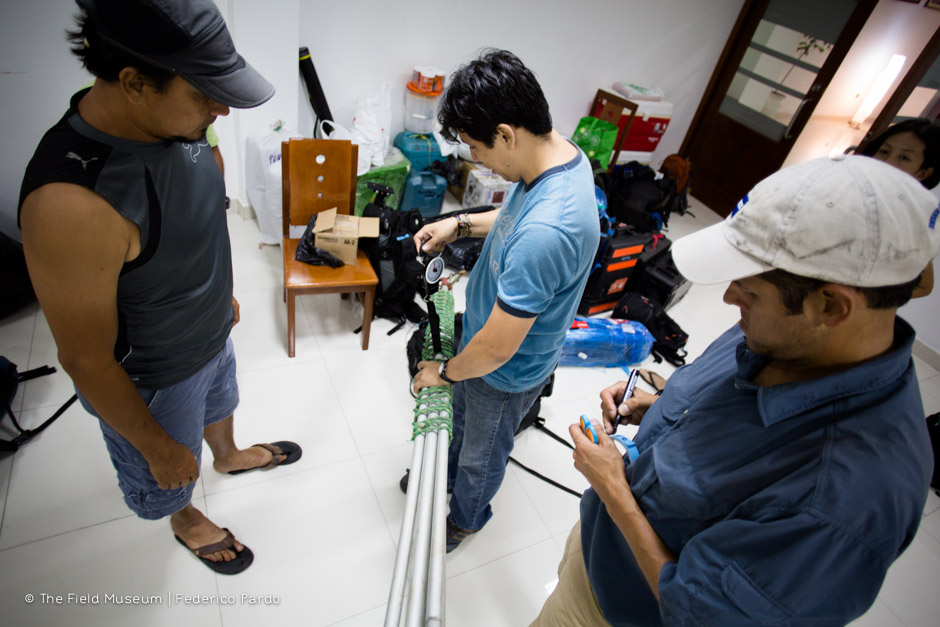
Researchers’ gear includes power generators and plant clippers. Everything and everyone must be weighed before getting on to the helicopter.
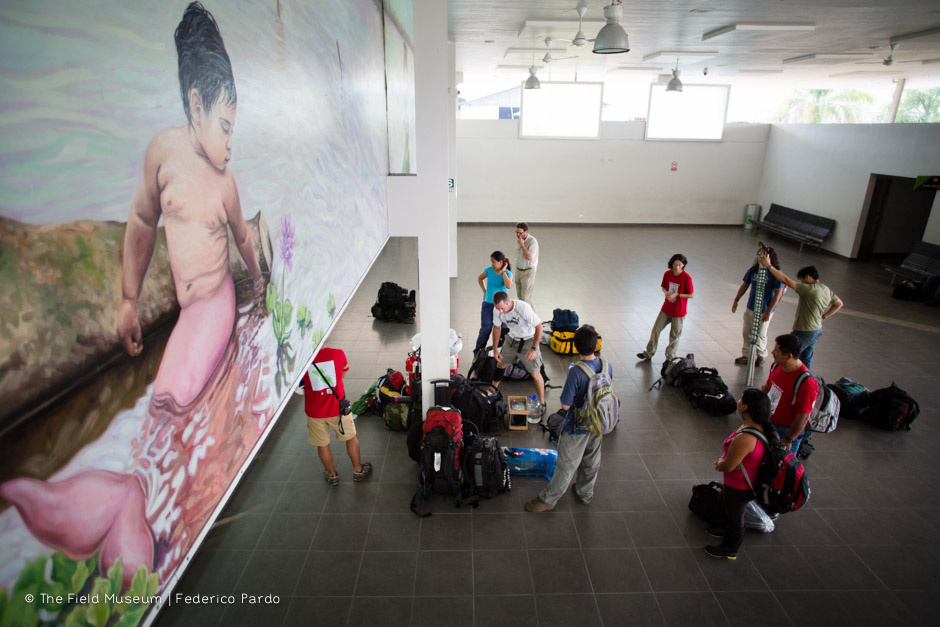
With blue skies above, the biological team is ready to travel to the first of three campsites strategically located in the watersheds of the Ere, Campuya, and Algodón rivers.

Two helicopter trips are needed to ferry the biological team and all of its gear from one campsite to the next.
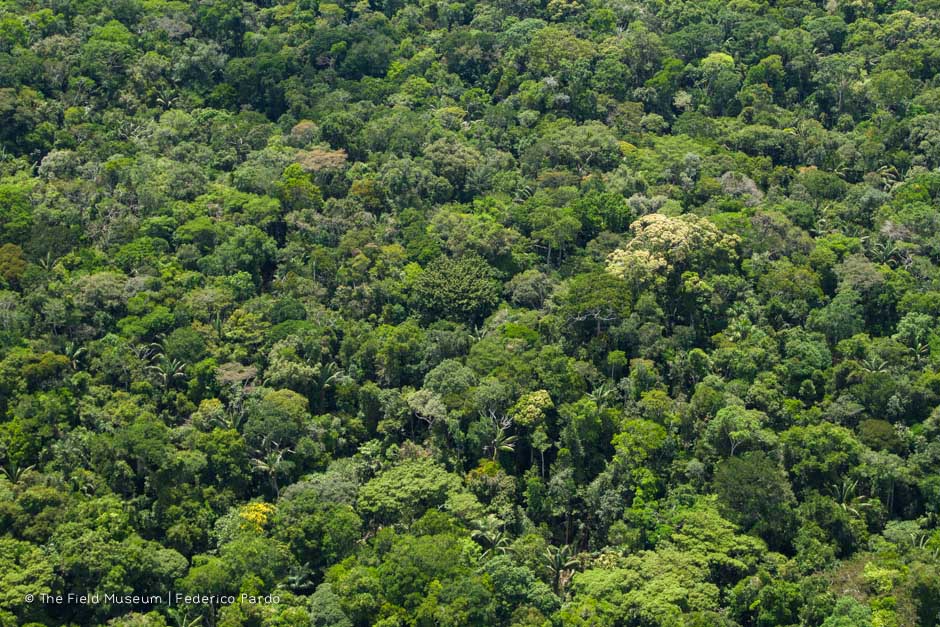
Plan B: head to Camp 2. Fortunately, our advance team had prepared the campsite and trails here in the days before the scientists’ arrival.
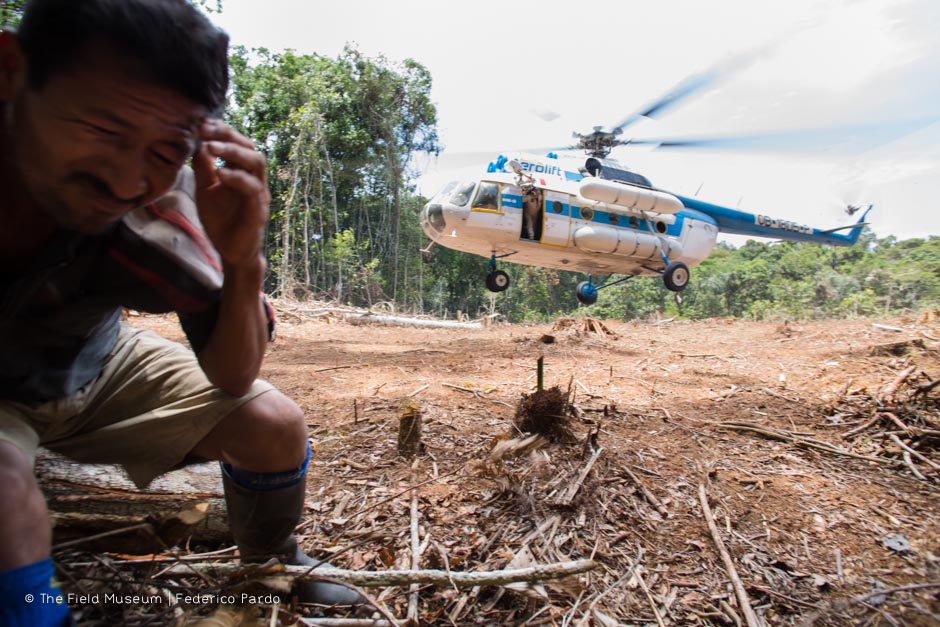
Improvised heliports in the middle of the forest allow access to remote and unexplored regions of the Amazon, study sites for rapid inventory scientists.
Geologists study rocks, soils, and water. Understanding the forest through the eyes of Bob Stallard is comparable to a worms-eye perspective that reveals the landscape and all of its secrets. As Bob walks the trails, he is constantly analyzing the composition of the soil and its color, the roots of trees and their “behavior,” the substrates in the bottoms of creek beds and on the tops of the hills and terraces that dominate this landscape.
Even though Bob has been studying the Amazon’s geology and hydrology for more than 40 years, it seems as if he has known this region since it formed tens of millions of years ago. His collection of colorful maps, his GPS device and his water conductivity meter are the trusty tools that allow him to understand and describe the landscape and determine the water quality of streams and creeks. Bob is a crucial part of the rapid inventories’ team and many of the other teams rely on the perspective he provides to better understand their own results.
Ornithologists study birds. Every day before dawn, Doug Stotz (USA) and Ernesto Ruelas (Mexico) start hiking the trails waiting for the first rays of light to flood the forest and the first bird songs. They are the first ones to retire to their tents at night, where they get as much sleep as they can before being out in the forest again by 4:30 am next morning. Doug and Ernesto rely on sounds as well as sight. Over the years they’ve learned hundreds of bird calls that help them identify who’s who inside the dense Amazonian forests.
With binoculars in hand, they walk the trails peering through the branches and waiting for any ‘chirp’ or silhouette to reveal a bird. Patiently braving the mosquitoes, they take note of every bird species they see or hear. Back at camp, Doug and Ernesto compare their daily field notes and then go to a good spot where they can see the whole sky and wait for birds to fly past. With luck they’ll add a few macaws, raptors or migrants to their daily bird list.
Botanists study plants. This team faces the greatest challenge: identify as many vascular plant species as possible, everything from ferns to trees. Lichens and mosses don’t make the cut.
With more than 3,000 species expected in the region, our team of 5 botanists disperses through the forest looking for fertile plants, plants in fruit or flower. Back at camp, Corine Vriesendorp (Netherlands), William Trujillo (Colombia), Marcos Ríos, Isaú Huamantupa and Nállarett Davila (Peru), open their giant collecting bags and press everything in newspapers late into the night. Botanists always have their clippers ready to reach for a branch. When the fruits or flowers are 150 feet from the ground, they put on the half-moon climbing irons and shimmy up a nearby tree to get close enough to collect the branch.
In addition our botanists identify vegetation types. Vegetation influences the distribution and abundance of many of the other study organisms, everything from fishes to mammals. It also reflects the soil types and underlying geology of the region.